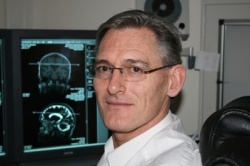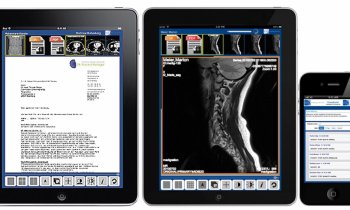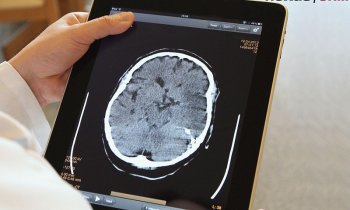Choosing and using a PACS
With four hospitals, each with its own radiology department, and the central Institute of Radiology located at Höxter the Catholic Hospital Association (KHWE) Weser-Egge, Germany, needed communication improvements.

‘We’re dependent on fast, smooth work processes to meet high and legitimate demands. Therefore, all information needs to be constantly available hospital-wide,’ explained Dr Martin Traupe, Director of the Institute.
Together with an engineering company, the facility - plus radiologists and other specialists – specified their needs and conditions. The central archive should be centred in St Vincent Hospital, so communication between buildings with relatively poor connections had to be attained, along with IT reliability and simple administration. ‘From a technical perspective, the integration of all modalities, including nuclear medicine, was essential to achieve complete image management in the facility,’ Dr Traupe pointed out.
In a multi-stage process, an Enterprise PACS JiveX, from the Bochum IT provider Visus, was selected ‘… the strongest solution for the radiologists,’ said IT manager Thorsten Krian. ‘ It’s fast, clearly arranged, easy to use and functionally mature. Also it’s technologically highly developed and fits very flexibly into the existing infrastructure with the SAN by DataCore.’
After a short training period clinicians discovered the benefits: images ready for diagnoses immediately after exams – and usually completed the same day. Individually adjusted hanging protocols significantly speed up diagnosis by process standardisation. Image processing options, e.g. zooming and magnification, provide further support. For comparison, previous digital images can be recalled quickly and easily.
As the quality and speed of diagnoses increases, patients’ waiting times are reduced. With the same number of personnel the number of patients examined is expected to increase steadily. The preparation for clinical discussion is easier – almost along with diagnosis. Additionally, new cases may be considered spontaneously without first have to obtain the images. So on-call interdisciplinary issues can also be resolved.
Now there are no more conventional radiographs. ‘Finding and retrieving images and findings does not apply,’ said Dr Traupe. ‘The ward physicians can give their patients faster information and also parts of the findings can be copied directly into the doctor's letter.’
Source: Visus Technology Transfer GmbH
21.05.2010










